A few months after its opening, SMAC - San Marco Art Centre, a new art space in the heart of Venice, announces its second exhibition, The Quantum Effect, scheduled from September 5 to November 23, 2025. Located in the Procuratie of St. Mark’s Square, the new cultural center continues its journey with an exhibition co-curated by Daniel Birnbaum and Jacqui Davies and produced in collaboration with OGR Turin. The project is part of a program involving international curators and institutions, with the aim of making SMAC an exhibition space at the center of contemporary cultural debate.
"SMAC’s exhibition program continues to highlight the unexpected with The Quantum Effect, an exhibition conceived by curators Daniel Birnbaum and Jacqui Davies," say Anna Bursaux, David Gramazio and David Hrankovic, Co-Founders of SMAC. "Creating a bridge between the worlds of science, art and film, The Quantum Effect highlights the research, dialogue and experimentation that define SMAC’s curatorial vision. Like every SMAC exhibition, this one is made by pursuing a collaborative approach and on this occasion is in fact, produced by SMAC and OGR Torino."
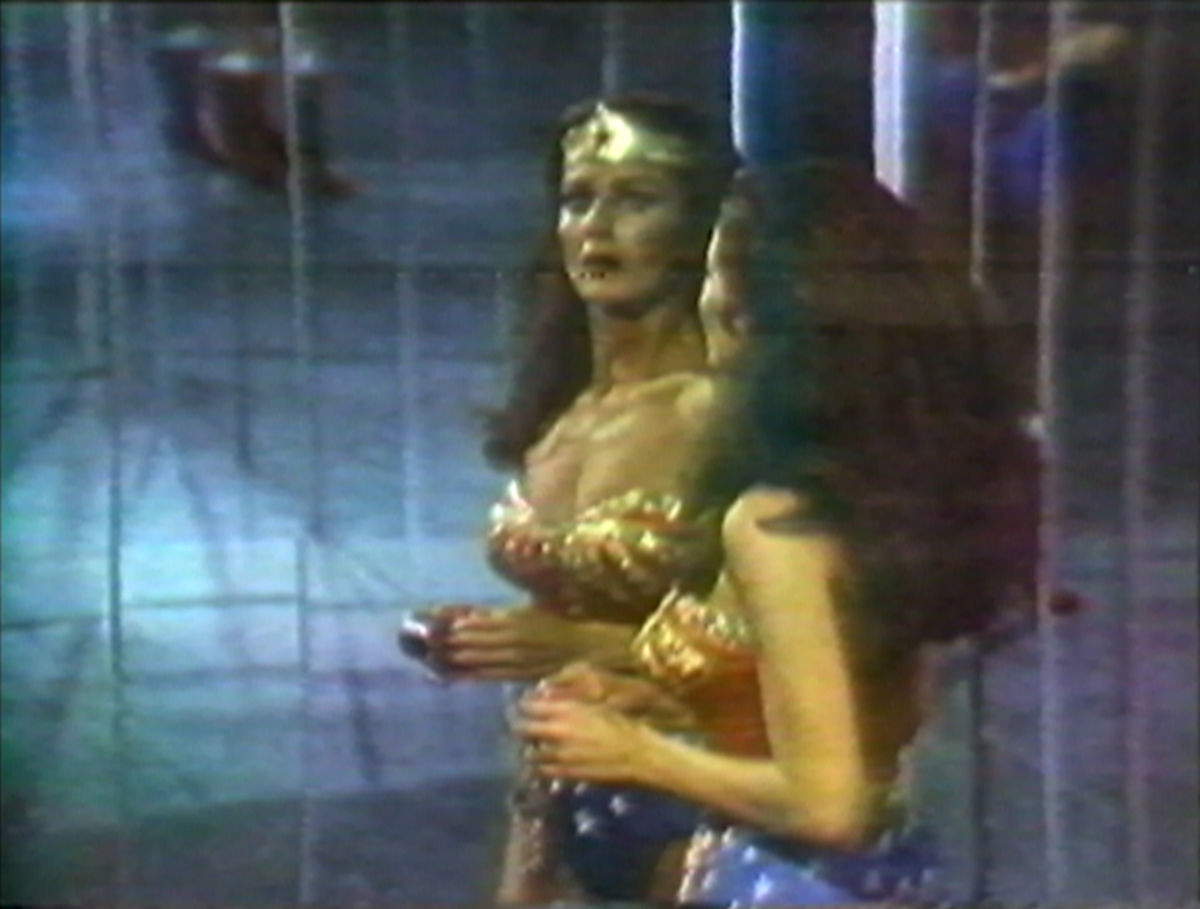
“Just as the paradoxical nature of quantum physics disrupts our understanding of reality,” say Daniel Birnbaum and Jacqui Davies, curators of The Quantum Effect, “we have created an exhibition that challenges the nature and meaning of things: artworks, films, scientific experiments, quantum theories and their symbolic representations. Even the distinct roles of curator, producer and artist are subverted: curator-designed experiments-installations and interventions are displayed alongside works by acclaimed artists. At times, fact and fiction merge, key players in quantum physics are reanimated and traditional timelines transformed into: ’Science Fiction’. In this extraordinary world, Davies takes on the role of artist, making works that instrumentalize science fiction film, popular culture, social media and more, building audiovisual portals between the worlds of art, film, science, philosophy and magic.”
The exhibition addresses the visual and conceptual implications of quantum theory, with references to parallel universes, teleportation, dark matter, supersymmetry and time travel. The selected works are woven into a narrative that draws as much from contemporary science as from science fiction and popular culture. The layout aims to create a true quantum experience, mixing scientific experiments, speculative imagery and literary references.
The exhibition is inspired by Raymond Roussel’s novel Locus Solus, evoked as a model for the creation of narrative environments in succession. Inside the center, the exhibition unfolds along a corridor of more than 80 meters and 16 rooms, arranged symmetrically around the work Oil VII (2007) by Isa Genzken. The spatial symmetry refers to the concept of supersymmetry and structures the path as a system of parallel worlds, in which the works are mirrored and multiplied.
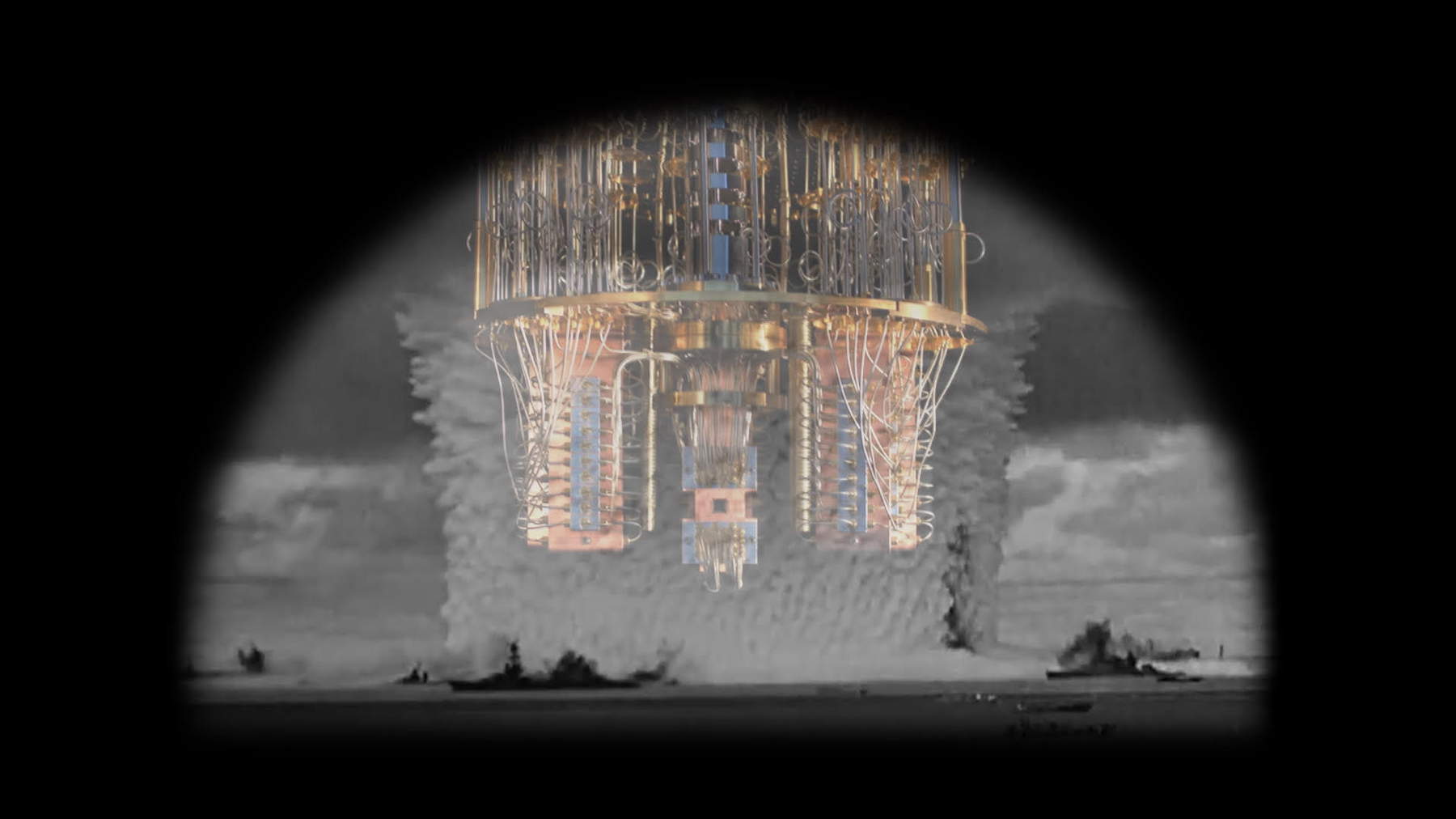
One of the central elements of the exhibition is precisely the logic of the double: each work is accompanied by a “twin,” a corresponding, sometimes nearly identical work that echoes its forms, themes or materials. The installations and works on display offer multiple levels of interpretation and interrogate the concepts of identity, transformation and simultaneity.
The artists featured include seminal names in the contemporary and twentieth-century landscape: Dara Birnbaum, Isa Genzken, Jeff Koons, Mark Leckey, Marcel Duchamp/Man Ray, John McCracken, Tomás Saraceno, and Sturtevant. Each intervention is located within a system of references and relationships, both visual and theoretical, in dialogue with the assumptions of physics and the speculative narratives of science fiction.
Tomás Saraceno participates with two works from the Hybrid Webs series, installations that incorporate spider webs within transparent vitrines. Their structure evokes a cosmology made up of relationships between sensory systems and connections between species and planets, from an intergalactic and multispecies perspective. Mark Leckey presents To the Old World (Thank You for the Use of Your Body) (2021-22), a video installation in which the protagonist crosses a transparent membrane, suggesting a passage from one universe to another. Instead, Jeff Koons exhibits One Ball 50/50 Tank (Spalding Dr. J Silver Series)(1985), a vitrine containing a basketball suspended in perfect balance between liquids of varying densities, made in collaboration with theoretical physicist Richard Feynman.
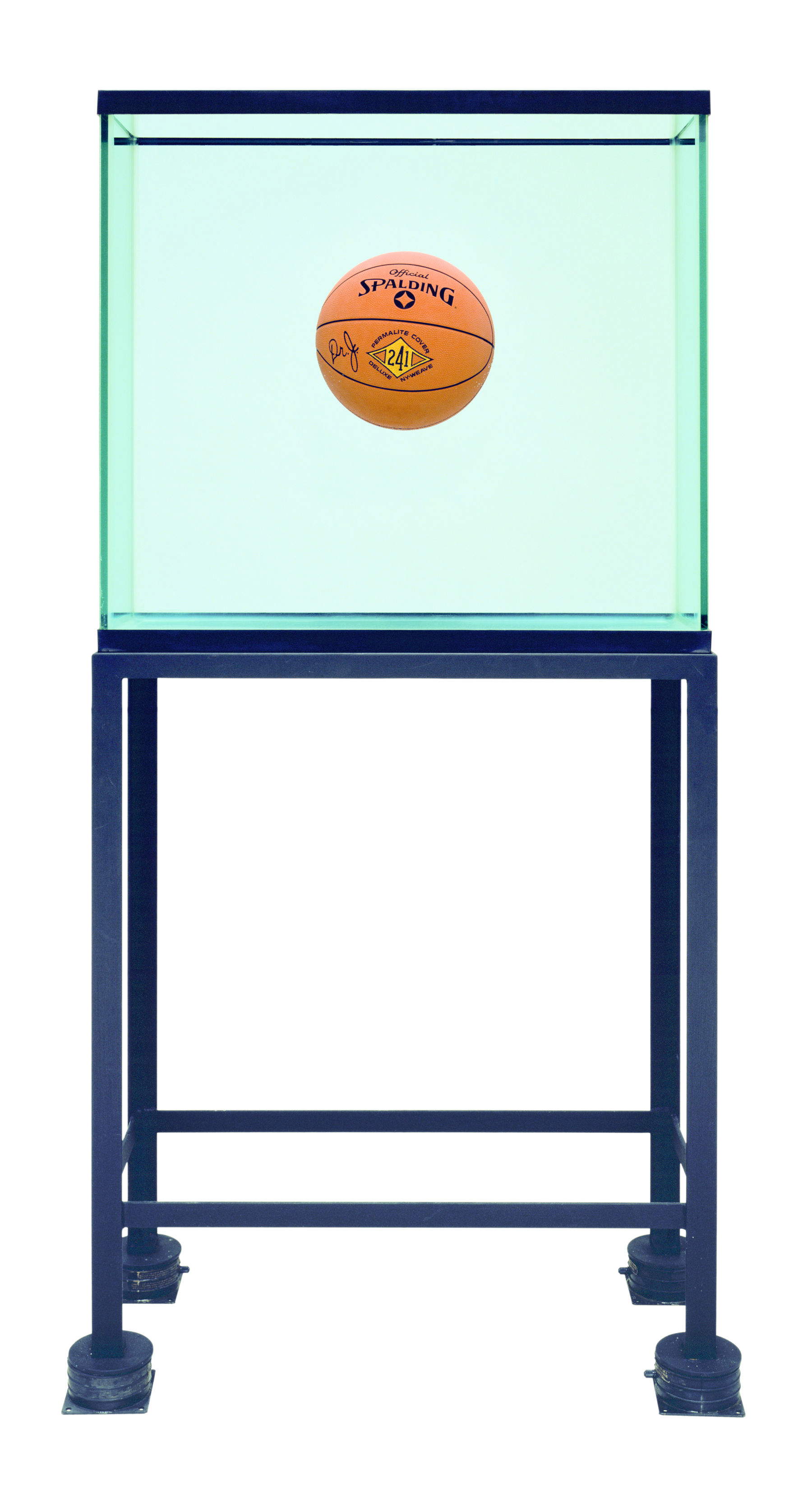
In Technology/Transformation: Wonder Woman(1978-79), Dara Birnbaum decomposes and recomposes the iconography of the superheroine as she crosses thresholds between human identity and alter ego, evoking dynamics of teleportation and mutation. The work is constructed from a reworking of television frames, in a continuous loop that amplifies the effect of transition. Another important presence is that of John McCracken, whose minimal sculptures recall the famous monolith from Stanley Kubrick’s 2001: A Space Odyssey. The artist himself suggested an extraterrestrial origin, in keeping with the enigmatic and perturbing character of the forms.
One of the recurring references in the exhibition is Marcel Duchamp, who is present with Glissière contenant un moulin à eau (en métaux voisins) (“Glider Containing a Water Mill [in Neighboring Metals]”) (1913-15), documented by a 1923 photograph made by Man Ray. The image, which depicts Duchamp lying behind his first glass work, serves as a conceptual grid for several works on display, particularly Jacqui Davies’ film works. Her installations use a semicircular structure, reminiscent of Duchamp’s “glider,” to project archival footage, quantum computer images, science fiction visual elements and music, as if they were glimpses seen through a quantum lens.
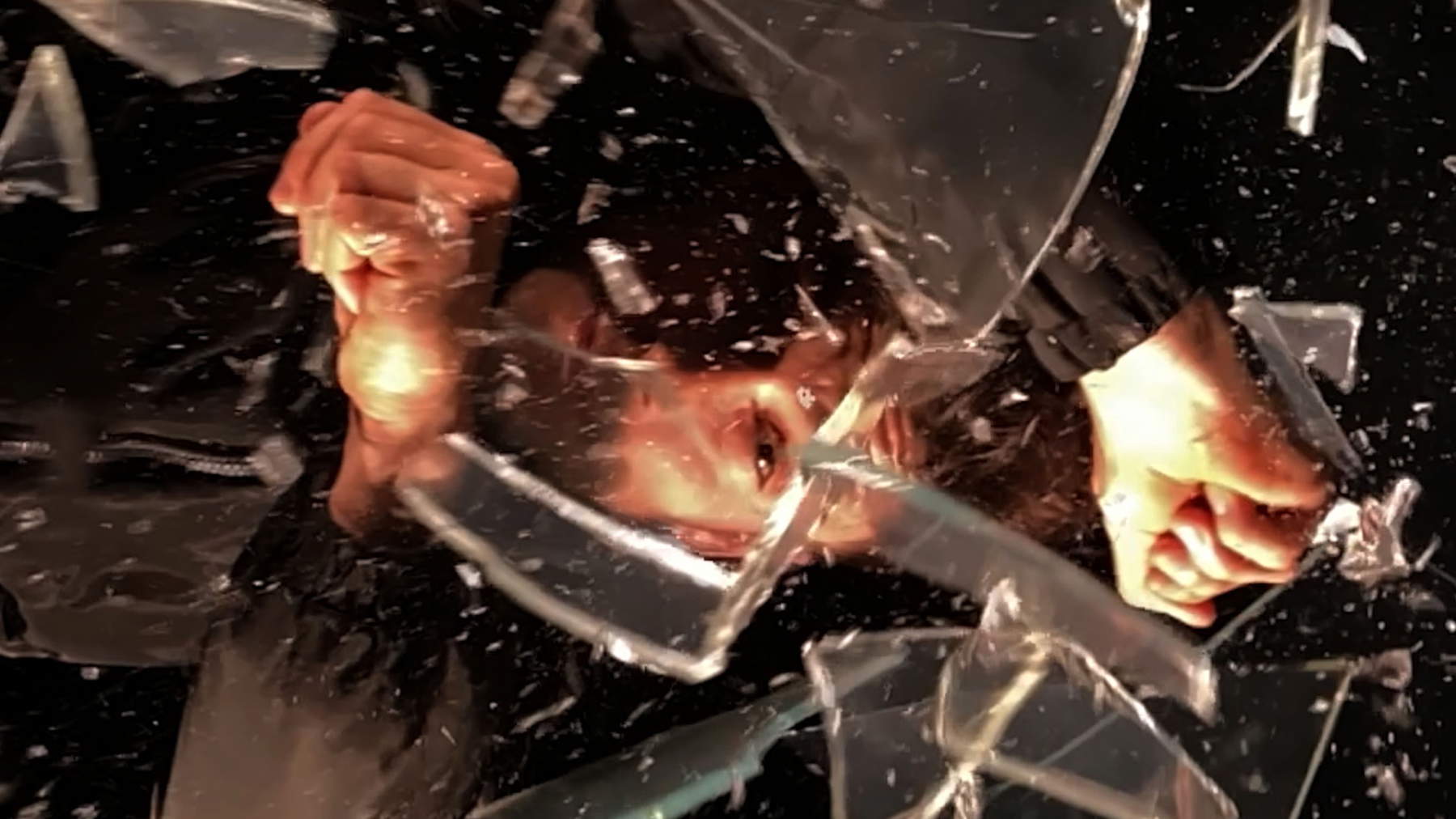
The tribute to Duchamp continues with Duchamp descendant l’escalier (1992) by Sturtevant, an artist known for her work of replication and reinterpretation. In this work, the reference to simultaneity is central: the artist appears in different states and places, in an identity multiplication that recalls the theoretical possibilities of quantum physics.
SMAC, which opened in May 2025 in conjunction with the Architecture Biennale, has already presented two monographs on Harry Seidler and Jung Youngsun. The birth of the center was made possible by an agreement with Generali, owner of the Procuratie, which entrusted the restoration of the building to David Chipperfield. The intervention transformed the property into an accessible cultural center, open to the public for the first time in five centuries. Also on the Procuratie’s third floor is The Home of The Human Safety Net, a social project that houses the interactive A World of Potential trail. The space takes visitors on a discovery of its strengths, relating them to the foundation’s activities.
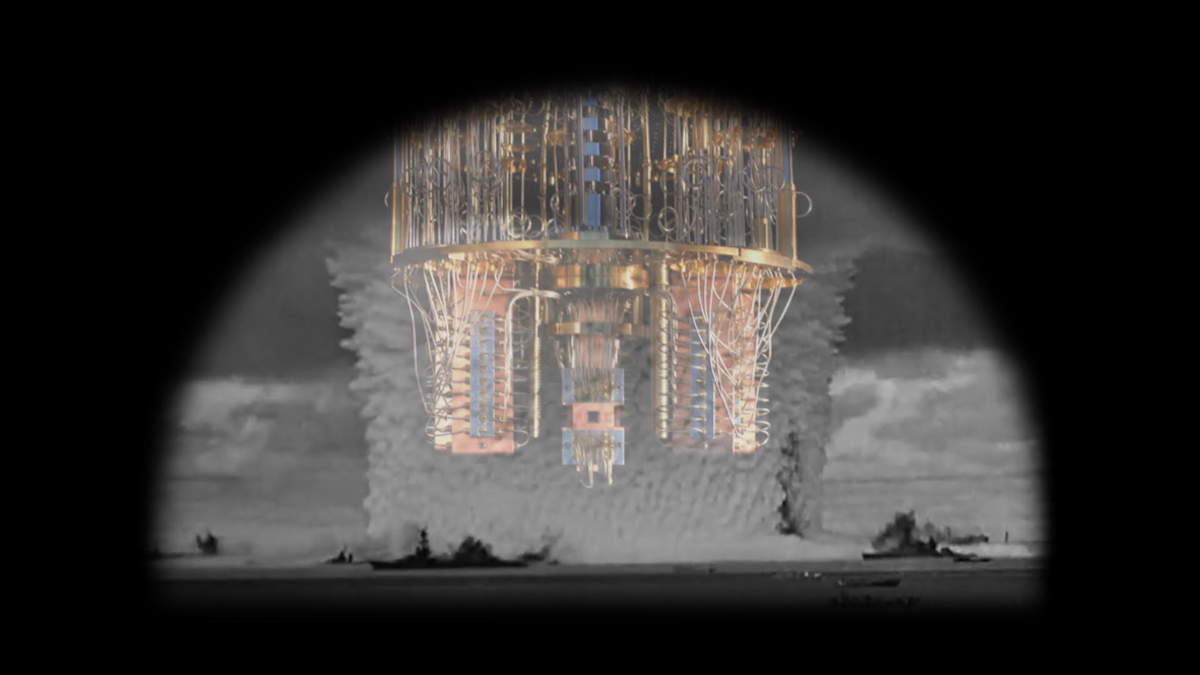 |
| An exhibition in Venice explores the spatial and temporal paradoxes introduced by quantum theory |
Warning: the translation into English of the original Italian article was created using automatic tools. We undertake to review all articles, but we do not guarantee the total absence of inaccuracies in the translation due to the program. You can find the original by clicking on the ITA button. If you find any mistake,please contact us.